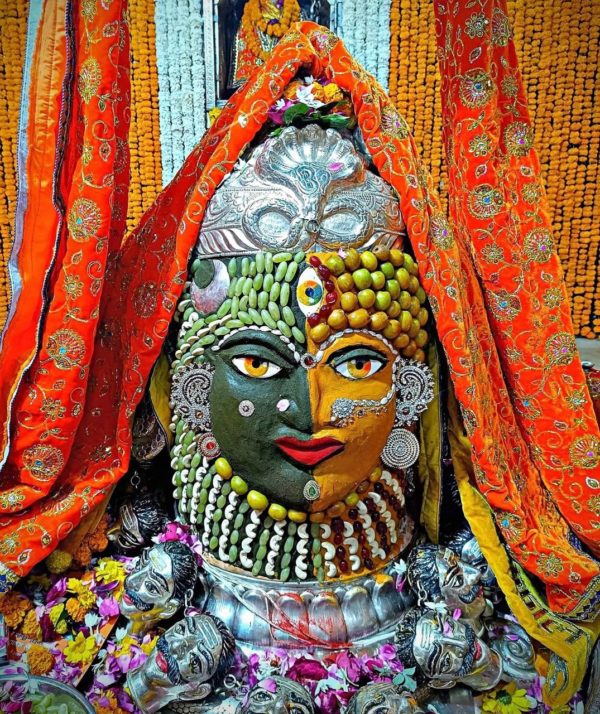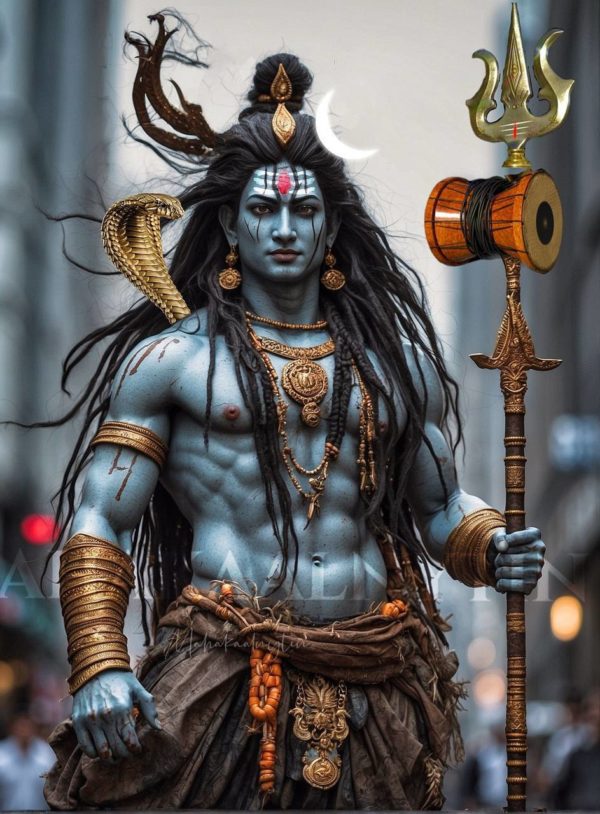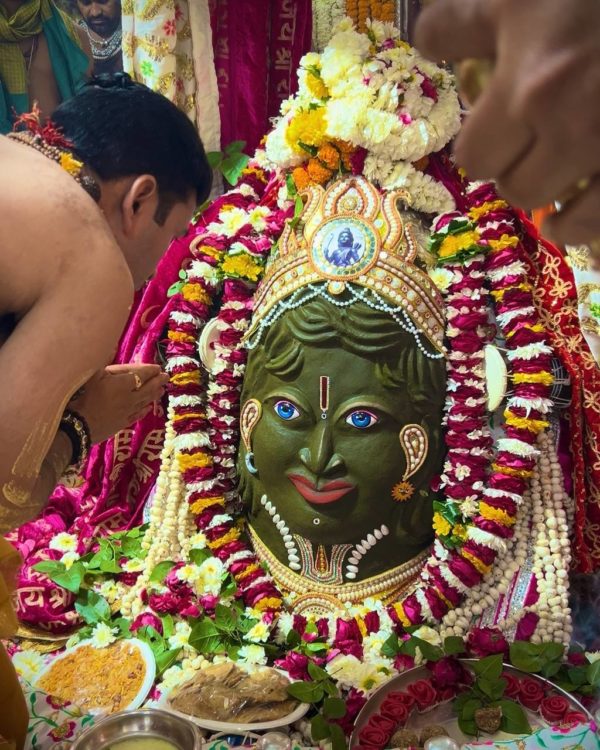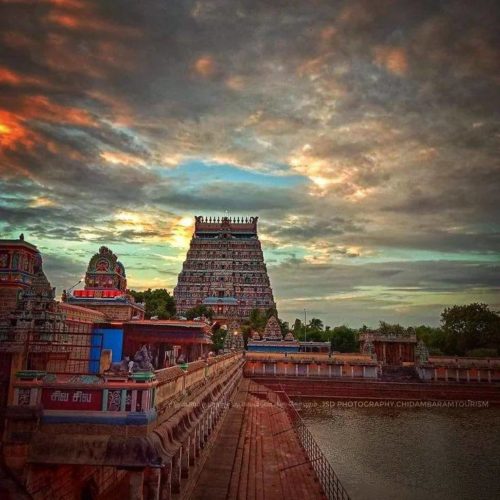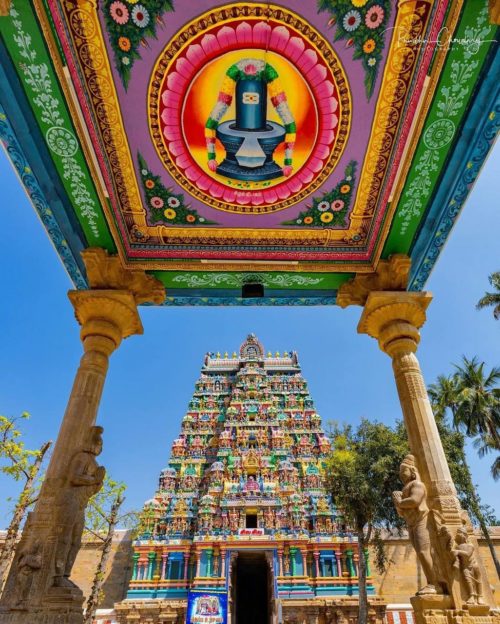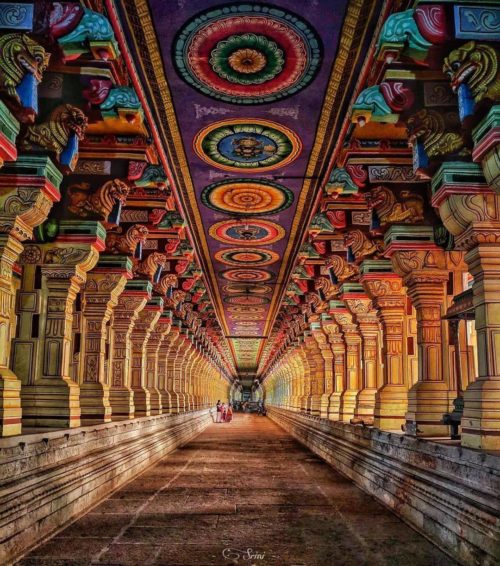JOYOTIRLINGS ARE PLACES OF RESPECT FOR SHIVA
The Jyotirlingam pilgrimage tour is a unique opportunity to get to know the culture and history of India. See her sacred heritage.
This is a trip to the holy places of Hinduism.
Jyotirilingas are places of special reverence for Shiva that can only be seen with spiritual vision.
In Shaivism, the lingam occupies a primary place as the main symbol worshiped by believers, personifying Lord Shiva himself.
About the tour:
he sacred Hindu temples with jyotirlingams are special places for the worship of Lord Shiva. They are the custodians of his energy and are honored as the earthly seat of Mahadev. They are credited with the power to perform miracles, grant liberation and help people in solving their immediate problems. There are twelve such places designated in the scriptures.
Somnath in Saurashtra (Gujarat State)
Soma (the Moon God) had twenty-seven wives, one of whom was Rohini. Soma deeply loved Rohini, which made his other wives extremely jealous and resentful. They went to their father, Daksha, and complained about Soma’s behavior.
Daksha advised Soma to give equal attention to all his wives. However, Soma ignored this advice and continued to favor Rohini. When Daksha learned about this, he became furious and cursed Soma, causing him to lose his radiance and weaken.
Soma then sent the gods to Lord Brahma to ask for help. At first, Brahma was angry at Soma, but later he softened and told the deities that Soma could be freed from the curse if he moved to Prabhasa and chanted the Maha Mrityunjaya Mantra repeatedly.
Soma went to Prabhasa and chanted the mantra a million times while sitting in meditation. Lord Shiva appeared before him and granted him a boon.
Soma asked Lord Shiva to free him from Daksha’s curse. Lord Shiva replied that Daksha’s words could never be false. However, he blessed Soma, saying that during the dark half of the month, he would wane due to Daksha’s curse, but during the bright half, he would regain his radiance due to Shiva’s blessing.
Lord Shiva also promised Soma that he and Parvati would always be near him. Thus, Lord Shiva manifested as Somnath. A sacred water reservoir called Chandrakund was also created nearby. It is believed that Soma was freed from the curse after bathing in this kund.
Mallikarjuna in Shri Shailam (Kurnool District, Andhra Pradesh)
This place is sacred in two ways: it is both a Jyotirlinga and a Shakti Peetha (a special site of Shakti worship).
Once, Shiva and Parvati decided to arrange the weddings of their sons – Ganesha and Kumaraswami (Subrahmanya). Both sons insisted that they should be married first. Their parents decided that whoever circumambulated the Earth first, bathing in all thirty million sacred rivers and lakes, would be married first.
Kumaraswami immediately set off on his vehicle – a peacock.
Ganesha, the elder son with an elephant head, slowly performed a Parikrama (circumambulation) around his righteous parents, Shiva and Parvati, and stopped.
When the exhausted Kumaraswami returned after circling the Earth, he saw Ganesha still sitting motionless near his parents. Ganesha’s wedding had already taken place, which enraged Kumaraswami. In anger, he left Kailash, the abode of Shiva, and settled at Mount Krauncha (Shri Shailam) in South India.
Shiva and Parvati sent the celestial sage Narada as their special messenger to persuade Kumaraswami to return home. However, Kumaraswami remained firm in his decision.
Parvati then rushed to Mount Krauncha in the form of a bhramara (bee), while Shiva manifested as a jasmine flower (mallika), which attracts bees.
Bhramaramba (Parvati) and Mallikarjuna (Shiva) established themselves at Shri Shailam in the form of a Jyotirlinga and a Shakti Peetha.
Mahakaleshwar in Ujjain (Madhya Pradesh State)
This sacred site is doubly blessed, as it houses both a Jyotirlinga and a Shakti Peetha of the Divine Mother.
Long ago, a king named Chandrasena ruled a kingdom with its capital in Ujjain. One day, Manibhadra, a great yogi and devotee of Shiva, gifted a jade Shivalinga to King Chandrasena. The king placed the precious stone in a necklace and wore it into his palace. Suddenly, everything in the palace turned to gold.
Neighboring kings, envious of Chandrasena’s ever-increasing wealth, developed hatred toward him and attacked him with their massive armies.
Chandrasena organized a grand abhishekam (ritual bathing of the Shivalinga with water and five elements) for Shiva in the temple, in which all the local inhabitants participated with deep devotion.
By Lord Shiva’s grace, all the enemies were defeated. Among those witnessing the worship was a young shepherd boy.
The boy experienced ecstatic joy watching the worship of Shiva. When he returned home, he began worshiping a large stone surrounded by smaller stones, treating the large stone as Shiva and the stone-bordered area as the temple of the Lord.
He continued his worship even while playing with his friends. Soon, the fortunate boy became so absorbed in his religious service that he lost all bodily consciousness.
After some time, his worried mother came and urged him to return home for a meal. The boy did not respond. She patted him firmly on the back, but he remained silent. Angered, she scattered the stones and rolled the boy on the bare rocky ground.
At that moment, the boy’s meditation was broken. Seeing his destroyed Shiva temple, he wept bitterly and lost consciousness.
Then Shiva manifested there in the form of a Jyotirlinga. When the shepherd boy regained consciousness, he saw the Jyotirlinga and, realizing the divine presence of Mahakaleshwar, prayed to Shiva with all his heart.
Omkareshwar, Island on the Narmada and Kaveri Rivers (Madhya Pradesh State)
The uniqueness of this Jyotirlinga lies in the fact that it has two forms.
Long ago, the saint Narada, traveling from Gokarna (in Karnataka) to the Himalayas, came to this sacred place in the Vindhya mountain range.
The lord of the mountains, Vindhya, invited the sage, worshiped him, and asked, “Is there any mountain in the world richer in minerals than I am?”
Narada praised Mount Meru (the northern pole). Vindhya then asked, “Narada, what should I do to achieve even greater magnificence and wealth than Mount Meru?”
Narada advised him to perform penance by meditating on Shiva.
At a special place in the Vindhya range, the Narmada River splits into two streams, named Narmada and Kaveri. These two streams later merge again downstream.
Between them, an island is formed, where a hill called Rudragiri stands.
Vindhya chose this sacred place as the most suitable for his penance.
Vindhya created a massive Yantra in the shape of the sacred Om symbol on Rudragiri Hill. He also performed severe penance there for a hundred months.
When Shiva finally appeared before him, Vindhya’s mind had become pure, and he humbly asked for a boon: “O Lord, please remain in my mountain range (i.e., on Rudragiri Hill).”
Shiva manifested as Omkareshwara in the previously mentioned Yantra and as Amareshwara in a stone Linga.
Both Omkareshwara and Amareshwara are Jyotirlingas and represent the same divine presence. Here, the Jyotirlinga is divided into two. The Omkareshwara Linga on Rudragiri Hill is larger than the Amareshwara Linga in Vishnupuri. However, worship is considered incomplete unless both Lingas are revered.
Sacred Hindu Temples with Jyotirlingas
Sacred Hindu temples with Jyotirlingas are special places of worship dedicated to Lord Shiva. They serve as repositories of His energy and are revered as earthly abodes of Mahadeva. These temples are believed to have miraculous powers, offering liberation and helping people resolve their pressing issues. In the scriptures, twelve such places are mentioned.
Somnath in Saurashtra (Gujarat)
Soma, the Moon God, had twenty-seven wives, one of whom was Rohini. Soma deeply loved Rohini, which made his other wives jealous and angry. They went to their father, Daksha, and complained about Soma’s behavior.
Daksha advised Soma to give equal attention to all his wives, but Soma ignored his advice and continued to favor Rohini. When Daksha learned of this, he became furious and cursed Soma to weaken and lose his radiance. Soma then sent the gods to Lord Brahma to seek help. Initially, Lord Brahma was also angry with Soma, but after some time, he softened and told the deities that Soma could be freed from the curse if he went to Prabhasa and chanted the Mahamrityunjaya Mantra.
Soma went to Prabhasa and chanted the mantra a million times while sitting in one posture. Lord Shiva appeared before him and offered him a boon. Soma asked Shiva to free him from Daksha’s curse. Lord Shiva replied that Daksha’s words could never be false, but he blessed Soma, saying that during the dark half of the month, he would wane due to Daksha’s curse, but during the bright half, he would regain his strength due to Shiva’s blessing. Lord Shiva also promised that He, along with Parvati, would always be present beside Soma.
Thus, Lord Shiva established Himself as Somnath. A water reservoir, Chandrakund, was built nearby, where Soma is believed to have been freed from his curse by bathing in it.
Mallikarjuna in Shri Shailam (Kurnool district, Andhra Pradesh)
This place is sacred in two ways—as the site of a Jyotirlinga and as the location of a Shakti Peetha (a sacred shrine dedicated to Shakti).
Once, Shiva and Parvati wanted to conduct marriage ceremonies for their sons, Ganesha and Kumaraswami (Subrahmanya). Each son insisted on getting married first. The parents decided that whoever traveled around the Earth, bathing in all thirty million sacred rivers and lakes, and returned first, would be married first. Kumaraswami immediately set off on his peacock.
Meanwhile, Ganesha, the elephant-headed elder son, slowly circumambulated (performed parikrama) around his pious parents, Shiva and Parvati, and then sat still.
When the exhausted Kumaraswami returned after traveling around the Earth, he saw Ganesha still sitting beside their parents. Ganesha’s wedding had already taken place. Enraged, Kumaraswami left Kailash, Shiva’s abode, and settled near Mount Krauncha (Shri Shailam) in South India.
Shiva and Parvati sent the celestial sage Narada as their special envoy to persuade Kumaraswami to return home. Despite Narada’s arguments, Kumaraswami remained resolute. Then Parvati rushed to Mount Krauncha, taking the form of a bhramara (bee), while Shiva manifested as a jasmine flower (mallika), which attracts bees.
Bhramaramba (Parvati) and Mallikarjuna (Shiva) took residence in Shri Shailam in the form of a Jyotirlinga and a Shakti Peetha.
Mahakaleshwar in Ujjain (Madhya Pradesh)
This sacred site is doubly blessed, as it is home to both a Jyotirlinga and a Shakti Peetha of the Divine Mother.
Long ago, a king named Chandrasena ruled a kingdom with its capital in Ujjain. One day, Manibhadra, a great yogi and devotee of Shiva, gifted a jade Shiva Lingam to King Chandrasena. The king set the precious stone in a necklace and wore it into the palace. Suddenly, everything in the palace turned to gold.
The neighboring kings, envious of Chandrasena’s ever-growing wealth, developed hatred toward him and attacked him with their mighty armies.
Chandrasena performed a grand abhishekam (ritual bathing of the Shiva Lingam with water and five sacred substances) for Shiva in the temple, with all the people of the kingdom participating in deep devotion.
By Lord Shiva’s grace, all enemies were vanquished. Among those witnessing the worship was a young cowherd boy. The child felt ecstatic watching the devotion to Shiva.
When he returned home, he began worshiping a large stone surrounded by smaller ones, treating the large stone as Shiva and the surrounding ones as the Lord’s temple.
He continued his innocent rituals even while playing with his friends. The boy became so absorbed in his religious service that he forgot his physical existence.
Eventually, his worried mother came to fetch him for a meal. He did not respond. Annoyed, she scattered the stones and dragged him home.
When the boy saw the destroyed temple, he wept bitterly and fainted. At that moment, Shiva manifested as a Jyotirlinga.
When the young cowherd regained consciousness, he saw the Jyotirlinga and, realizing the divine presence of Mahakaleshwar, prayed to Shiva with all his heart.
Omkareshwar, an Island on the Narmada and Kaveri Rivers (Madhya Pradesh)
The uniqueness of this Jyotirlinga is that it has two forms.
Long ago, the sage Narada traveled from Gokarna (in Karnataka) to the Himalayas and arrived at this sacred place in the Vindhya mountain range. The ruler of the Vindhya mountains invited Narada, worshiped him, and asked:
“Is there any mountain in the world richer than me in minerals?”
Narada praised Mount Meru (the North Pole). Vindhya then asked, “Narada! What should I do to attain even greater grandeur than Mount Meru?”
Narada advised him to perform austerities while meditating on Shiva.
At a special location between the two sacred arms of the Narmada River, Vindhya created a massive yantra in the shape of the sacred Om symbol on Mount Rudragiri. There, he practiced intense austerities for a hundred months.
When Shiva finally appeared, Vindhya humbly asked for a boon:
“O Lord! Please remain in my mountain range (on Mount Rudragiri).”
Shiva manifested as Omkareshwara in the yantra and as Amareshwara in a stone Lingam. Both Omkareshwar and Amareshwar are Jyotirlingas—they are one and the same.
The Jyotirlinga here is split into two—Omkareshwar Lingam on Rudragiri Hill and Amareshwar Lingam in Vishnupuri. However, worship is considered incomplete unless one performs puja to both Lingams.
Kedarnath in the Himalayas
This sacred site is situated at an altitude of 3,600 meters in the Himalayas.
The Alakananda River flows east of this location, while the Mandakini River flows to the west. Downstream, these rivers merge at Rudraprayag and later join the Ganges.
The Kedarnath Temple is open only for six months, from May to October. During the other half of the year, the temple is covered in snow. A miracle associated with this temple is that the lamp lit before closing the temple in winter continues to burn without being refilled with oil until the temple reopens six months later.
Here, the Shiva Lingam is cone-shaped with many zigzag patterns on its surface.
One legend explains its unusual shape: Thousands of years ago, Shiva appeared as a buffalo before the Pandava brothers in this sacred place. However, the Pandavas recognized Him and grabbed the buffalo’s tail. The buffalo leaped forward, and due to the force, its tail detached from its body.
Shiva manifested here as Kedareswara in the unique form of a tailless buffalo.
Bhimashankar in Pune District, Maharashtra
The temple of Bhimashankar is situated in the Sahyadri hills, near the source of the Bhima River.
According to legend, a demon named Bhima was the son of Kumbhakarna, the brother of Ravana. After Kumbhakarna was slain by Lord Rama, Bhima’s mother, Karkati, fled to a forest to protect her child.
When Bhima grew older, he learned about his father’s fate and was furious that Vishnu, in his incarnation as Rama, had killed Kumbhakarna. Seeking revenge, Bhima performed severe austerities and won a boon from Lord Brahma, which made him extremely powerful.
Bhima terrorized the world and even imprisoned a great devotee of Shiva, King Kamarupa. The king remained devoted to Lord Shiva despite his imprisonment, constantly chanting the sacred mantra “Om Namah Shivaya.”
Seeing this, Bhima ordered the king to stop his prayers, but Kamarupa refused. Enraged, Bhima raised his sword to strike him down. At that moment, Lord Shiva appeared and struck Bhima with His divine weapon. A great battle ensued, and Shiva ultimately destroyed the demon with His trident.
The gods rejoiced, and at their request, Shiva manifested as a Jyotirlinga at that very place, which became known as Bhimashankar.
Kashi Vishwanath in Varanasi (Uttar Pradesh)
The temple of Kashi Vishwanath, situated on the banks of the Ganges in Varanasi, is one of the most revered shrines in Hinduism.
According to the Shiva Purana, once Lord Vishnu and Lord Brahma had an argument about who was superior. To resolve their dispute, Lord Shiva appeared as an infinite pillar of fire, the Jyotirlinga, and challenged them to find its beginning and end.
Brahma flew upward in the form of a swan, while Vishnu took the form of a boar and dug downward. Neither could find the end of the fiery column. Vishnu admitted his defeat, but Brahma falsely claimed that he had reached the top.
Angered by Brahma’s deceit, Shiva cursed him that he would never be worshiped as much as Vishnu. Since then, Shiva has been worshiped in the form of a Jyotirlinga, and one of the most sacred of these is Kashi Vishwanath.
It is believed that Kashi (Varanasi) is the holiest city and that anyone who dies here attains moksha (liberation).
Trimbakeshwar in Nashik (Maharashtra)
The Trimbakeshwar temple is located near the source of the sacred Godavari River.
According to legend, the sage Gautama performed great austerities, and Lord Varuna (the god of water) blessed him with an abundance of grain and water. The other sages became envious and sent a celestial cow into Gautama’s field. When Gautama tried to chase it away, the cow fell dead.
Feeling guilty, Gautama performed penance, and Lord Shiva granted him a boon that the sacred Ganges (Godavari) would flow there. At the request of the gods and sages, Shiva manifested as the Trimbakeshwar Jyotirlinga.
What makes this Jyotirlinga unique is that it has three faces, representing Brahma, Vishnu, and Shiva.
Vaidyanath in Deoghar (Jharkhand)
The Vaidyanath Jyotirlinga is associated with the legend of the demon king Ravana.
Ravana, a great devotee of Shiva, wished to take the Lord’s Lingam to Lanka. He performed severe penance, and Shiva granted him the boon of carrying a Jyotirlinga. However, Shiva warned him that if he placed the Lingam on the ground, it would become permanently fixed there.
The gods, fearing Ravana’s growing power, devised a plan. They sent Lord Vishnu in disguise, who tricked Ravana into putting the Lingam down. As a result, the Jyotirlinga remained in Deoghar.
It is believed that worshiping this Lingam with devotion can cure ailments, which is why it is called Vaidyanath, meaning “the Lord of Healing.”
Nageshwar in Dwarka (Gujarat)
The Nageshwar Jyotirlinga is associated with the legend of a demon named Daruka.
Daruka and his wife, Daruki, were ardent devotees of the goddess Parvati. However, they misused their powers and tormented sages and devotees. One such devotee, Supriya, was imprisoned by Daruka.
Inside the prison, Supriya advised the other captives to chant “Om Namah Shivaya.” Hearing their prayers, Lord Shiva appeared and destroyed Daruka. At the request of the devotees, He manifested as a Jyotirlinga, which became known as Nageshwar.
This temple is located near the holy city of Dwarka, associated with Lord Krishna.
Rameshwar in Rameswaram (Tamil Nadu)
The Rameshwar Jyotirlinga is closely linked to the epic Ramayana.
After defeating Ravana, Lord Rama wanted to absolve Himself of the sin of killing a Brahmin (since Ravana was a Brahmin). He decided to worship Shiva and instructed Hanuman to bring a Lingam from Mount Kailash.
However, Hanuman was delayed, and Sita, seeing the auspicious time for worship slipping away, made a Lingam out of sand. Rama performed the puja to this Lingam, which is now revered as the Rameshwar Jyotirlinga.
When Hanuman returned with the original Lingam, Rama placed it alongside the sand Lingam. Both Lingams are still worshiped in the temple today.
Rameshwaram is one of the holiest pilgrimage sites for Hindus, as it is believed that a visit to this temple completes one’s spiritual journey.
Grishneshwar in Ellora (Maharashtra)
Grishneshwar, the last of the twelve Jyotirlingas, is located near the famous Ellora Caves.
According to legend, a woman named Kusuma was a devout worshiper of Lord Shiva. She made it a daily ritual to immerse a Shiva Lingam in a lake.
Her husband’s first wife, jealous of Kusuma’s devotion, killed her son in anger. However, Kusuma continued her worship without wavering. Pleased with her devotion, Lord Shiva restored her son’s life and manifested as the Grishneshwar Jyotirlinga.
This temple, though smaller than the others, is of great significance, as it is believed to grant liberation and divine blessings to its devotees.
Tour route:
- Day 1-3: Indore
- Day 4-5: Omkareshwar
- Day 6-7: Aurangabad
- Day 8: Shirdi
- Day 9-10: Nasik
- Day 11-12: Bhimashankar
- Day 13-14: Mumbai
Main attractions:
- Mahakaleshwar Temple
- Omkareshwar Temple
- Grishneshwar temple
- Kailash Temple
- Sai Baba Temple
- Shani Shignapur Temple
- Trimbakeshwar Temple
- Bhimashankar Temple
- Mahakaleshwar Temple in Ujjain, where Shiva is known as the “Keeper of Time”
- Omkareshwar Temple in Madhya Pradesh where Shiva is known as “Lord of Omkara”
- Grishneshwar Temple in Verul, where Shiva is known as “Lord of Compassion”
- Trimbakeshwar Temple in Nasika, where Shiva is known as the “Triune Lord”
- Bhimashankar Temple in Maharashtra where Shiva is known as ‘Lord Bhima’
The price of the tour includes:
- Accommodation in comfortable 4* hotels
- Food (breakfast, dinner)
- Transport
- Excursions
- Entrance tickets to temples
- Services of a professional guide
Book your tour today and discover the spiritual treasures of India!
Tour program:
Known as the commercial capital of Madhya Pradesh and the cleanest city in India, Indore was the capital of the Holkars. The largest and most populous city in central India. The city is popular for its history, monuments, food and bazaars.
DAY 1 – check-in at the hotel and begin a full day of sightseeing in India’s cleanest city, as well as visiting various temples in the cities. Dinner and overnight in Indore.
NIGHTS IN UJJAIN. Ujjain is one of those divine lands in Madhya Pradesh where you don’t just feel alone but immerse yourself in the divinity that soothes your soul.
The holy city hosts one of the largest religious gatherings in the world – the Simhastha (Kumbha Mela), which is held once every 12 years on the banks of the Shipra River. The biggest attraction of Ujjain is the Mahakaleshwar Jyotirlinga temple. It is one of the 12 jyotirlingams where the Bhasma aarti is a daily ritual not to be missed and this is what Ujjain is famous for. In the form of Mahakaleshwar, Lord Shiva is often referred to as the “Keeper of Time” or “Kaala Bhairava”. It is believed that visiting this temple can help overcome the fear of death and lack of time.
DAY 2 – Wake up in the morning and get ready to move to another city called Ujjain which is an hour and a half drive from Indore.
Check into the hotel, take some rest and get ready to take the bhasma arti tickets.
We will visit the temple and in the evening we will visit Harsiddhi Shaktipith.
Return to the hotel, dinner and overnight at the hotel.
DAY 3 – If we get the ticket for the bhasma arti, we have to wake up at 2 am and go to the bhasma arti which starts at 4.00 am. After Arti we will return to the hotel and have breakfast. Let’s rest for a few hours and start a half-day tour of the city’s sights.
Return to hotel, dinner and overnight in Ujjain.
Omkareshwar is a Hindu temple dedicated to the Hindu god Shiva. It is one of the 12 revered Jyotirlinga shrines of Lord Shiva. It is located on an island called Mandhata or Shivapuri on the Narmada River in the Indian state of Madhya Pradesh. It is said that the shape of the island is similar to Devanagari, the symbol of the Indian classical language of Sanskrit. There are two main temples of Lord Shiva here, one is Omkareshwar, which means “Lord of Omkara” or “Lord of the Straits of Om”, located on the island, and the other is Mamleshwar, which means “Immortal Lord” or “Lord of the Immortals”. or the Devas are located on the southern bank of the Narmada River on the mainland.
DAY 4 – We wake up in the morning, have breakfast and get ready to visit the jyotirling, called Omkareshwar. Hotel accommodation, dinner and overnight at Omkareshwar.
DAY 5 – Wake up early in the morning and get ready to visit the Omkareshwar Temple. After the temple, we will go to the hairdresser, we have to walk 6 km.
Dinner and overnight at Omkareshwar.
GRISHNESHWAR 2 NIGHTS
KAILASH TEMPLE
Grishneshwar Temple is one of the twelve jetirlingams dedicated to Lord Shiva, located in Verul, near Aurangabad in the state of Maharashtra, India. The meaning of the name “Grishneshwar” is “lord of compassion”. The significance of this temple is that devotees can touch the Shiva linga with their bare hands.
The Grishneshwar Jyotirlinga Temple is considered to be the smallest and the last of the twelve Jyotirlingas in the country. It is located about 1 km from the famous Ellora Caves. It is a famous place of pilgrimage which is visited by many visitors every day.
KAILASH TEMPLE – The Kailash Temple, also known as the Kailashnath Temple, is an unusual Hindu temple dedicated to Lord Shiva located in the Ellora Caves complex in Maharashtra, India. Carved out of a single solid rock, it is a magnificent architectural and artistic wonder. This monolithic structure is adorned with intricate carvings and sculptures depicting mythological stories, gods and goddesses, and intricate details replicating Mount Kailas, the heavenly abode of Lord Shiva. The Kailash Temple is a UNESCO World Heritage Site and a testament to ancient Indian craftsmanship and dedication.
DAY 6 – We wake up in the morning, have breakfast and get ready to move to our next destination – Aurangabad which is 350 km from Omkareshwar. It will take a whole day to reach the destination. Check-in at the hotel. Dinner and overnight in Aurangabad.
DAY 7 – We wake up in the morning, have breakfast and are going to visit the temple. First, we will visit the Grisneshwar temple. And then we will visit Kailash Temple and Ellora Caves. Return to the hotel in the evening.
Dinner and overnight in Aurangabad.
SHIRDI SAI BABA – Sri Sai Baba is revered as one of the greatest saints ever seen in India, endowed with unparalleled powers and worshiped as God incarnate.
SAI means Sakshaat Ishwar – GOD ABSOLUTE.
This mysterious fakir first appeared in Shirdi in his youth and remained there throughout his long life. He changed the lives of those who met him and continues to do so even after his samadha in 1918 for those whose hearts are touched by his love and who pray and cry out to him in every situation of life for his blessings.
Baba stated that his mission is to “give blessings” to all without discrimination, and he proves this in many ways by healing the sick, saving lives, protecting the vulnerable, preventing accidents, bestowing progeny, promoting financial gain, bringing people into harmony in myself himself and with each other and, above all, in the realization of the spiritual evolution and transformation of those who came to him as a last resort.
SHANI SINGNAPUR – The Shani Temple, Shignapur, is a Jeet Devasthan (living temple) in Ahmednagar district, famous for the magical and powerful Lord Shani, who is believed to still reside in a black stone. The Hindu god representing the planet Saturn is called Swayambhu, which means that he appeared in the form of a black stone that attracts thousands of devotees every year.
The people’s trust is so strong that none of the houses in the beautiful village have doors or locks, as people believe that Mr. Shani protects their valuables from thieves.
On some of the holiest days like Saturday, Amavasya and Sri Shaneschar Jayanti, the enthusiasm and fervor are taken to a new level. Some Hindus worship Lord Shani to please him, as the influence of the planet Saturn on one’s life is considered not an easy task for life.
Visiting Shani Shignaur temple surely gives hope that your life will be smooth and Lord Shani will give you only happiness. Without long queues and waiting period, you can easily get darshan of divine power.
DAY 8 – We wake up in the morning, have breakfast and prepare to move to Shirdi,
the trip takes about an hour.
We will rest and in the evening we will visit the temple of Sai Baba.
Return to the hotel and overnight stay.
TRIMBKESHWAR – 2 NIGHTS
Trimbakeshwar is just 28 kilometers away from the city of Nashik and it is here in Brahmagiri that the holy river Godavari originates. Trimbakeshwar is one of the holiest places in the Hindu religion and holds a special place in the religious beliefs of every Hindu. People who have sarpa dosha perform pooja in temple to remove it.
It is among the 12 ‘jetirlingams’ dedicated to Lord Shiva. Located in Trimbakeshwar of Nashik district, where the Godavari River originates from the nearby Brahmagiri hill, the site has both historical and mythological significance due to the presence of several caves associated with the ‘Nath’ sect. The Kumbha Mela, the largest mass Hindu pilgrimage, is held here every twelve years.
Nasik – Situated on the banks of the sacred Godavari River, Nasik (or Nasik) derives its name from an episode in the Ramayana where Lakshmana, Rama’s brother, chopped off the nasika (nose) of Ravana’s sister. Today, the old quarter of this large provincial city has intriguing wooden architecture, interesting temples that harken back to Hindu epics, and huge bathing ghats. The city is noticeably cleaner, better maintained and greener than many Indian cities of its size.
DAY 9 – We wake up in the morning, have breakfast and prepare to visit the most important temple of Shani.
Then move to Nasik. Which will last 3 hours.
Check-in at the hotel.
Relax and get ready for sightseeing. Dinner, overnight stay.
DAY 10 – Wake up early in the morning and get ready to visit Trimbakeshwar Temple. After the temple, we will go on a short trek of 3 km to Anjani Parvat (where god Hanuman was born). Return to the hotel in the evening. Dinner and overnight in Nasytsia.
Bhimashankar Temple located in the state of Maharashtra India,
is a famous religious site of great importance to devotees and pilgrims. Nestled amidst the lush greenery of the Sahyadri mountains, this ancient temple is dedicated to Lord Shiva and is considered one of the twelve Jyotirlingams in the country. The temple’s rich history, architectural wonder, spiritual atmosphere and enchanting nature make it a must-visit for both religious enthusiasts and nature lovers.
DAY 11 – We wake up in the morning, have breakfast and prepare for our next move to Bhimashankar.
200 km and 5 hours one way.
Check-in, dinner and overnight at Bhimashankar.
DAY 12 – Wake up early in the morning and visit the Bhimashankar Temple.
Return to the hotel, have breakfast and rest a little.
In the evening we will visit the Ganesha temple. Return to hotel, dinner and overnight at Bhimashankar.
DAY 13 – Breakfast and transfer to Mumbai. Check in and relax or sightsee for half a day.
Dinner and overnight in Mumbai.
DAY 14 – we wake up, have breakfast and prepare for the transfer to the airport.
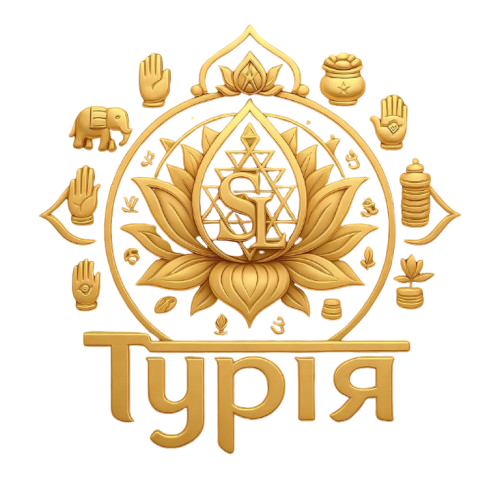

 Українська
Українська Русский
Русский
